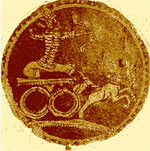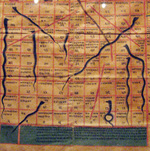
Art History/Craft History, Craft, Handloom, Art
From Kridapatram to Ganjifa: Indian Playing Cards
Gupta, Swati
April, 2012
Playing cards have become an inseparable part of the human society. Though it is presumed that playing cards have been around for couple of centuries but further investigation into its history places it as early as in 7th A.D century when they were known as Kridapatram. Under the Mughal rule, in 16th century the playing cards reached their golden period when they were called Ganjifa.
Playing cards are believed to have originated independently in India or in China or that one was influenced by the other. In India they were well known as Kridapatram which means “painted patras for playing” where, patras were made of cloth.
A typical playing card today is made out of specially prepared heavy paper, thin card or thin plastic, they are rectangular in shape and palm-sized for convenient handling.
A complete set of cards is called a pack or deck, and the set of cards held at one time by a player during a game is commonly called their hand. The front or face, of each card carries markings that distinguish it from the other cards in the deck and determine its use under the rules of the game being played. The back of each card is identical for all cards in any particular deck, and usually of a single color or formalized design. The cards are assembled into a deck, and their order is randomized by shuffling.
History of Indian playing cards
Earlier Indian cards or kridapatram were round in shape, were expertly hand painted with intricate designs, and comprised of more than four suits, and often as many as thirty two. Decks used for playing had suits starting ...
PRACTITIONERS: INDIA
Access 70,000+ practitioners in 2500+ crafts across India.
BIBLIOGRAPHY
10,000+ listings on arts, crafts, design, heritage, culture etc.
GLOSSARY
Rich and often unfamiliar vocabulary of crafts and textiles.
SHOP at India InCH
Needs to be written.






